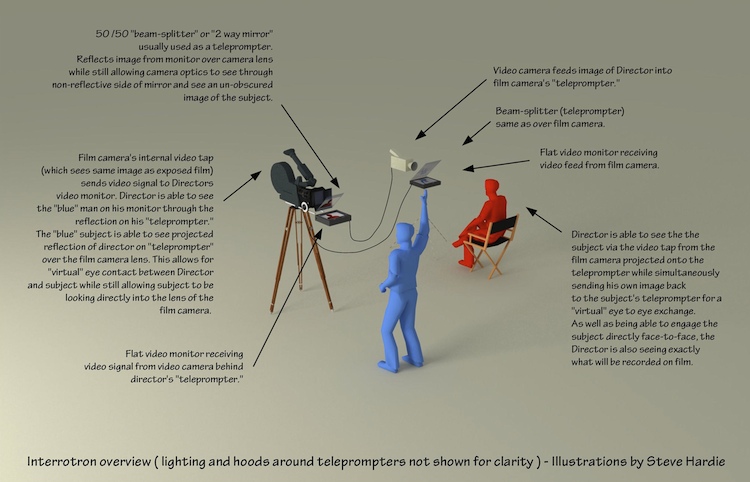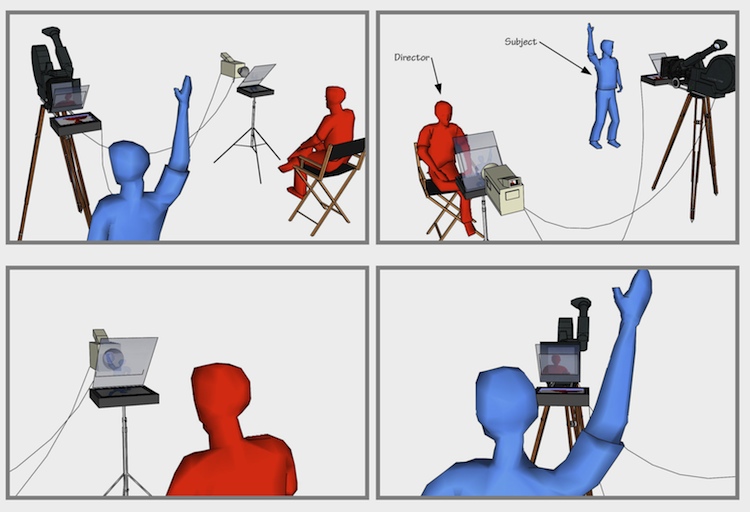Oscar-winning documentary filmmaker Errol Morris has a signature style that’s as instantly recognizable as Martin Scorsese’s or Wes Anderson’s: namely, showing his interviewees talking right into the camera lens. But I’ve always wondered – unless he has a video tap from his eyeball going right into the camera, how does he actually shoot that way? Here’s an example of the direct-to-lens style, from his Oscar-winning The Fog of War:
And from the Apple commercials:
And from a recent documentary commissioned by IBM:
Think about it: How does Morris get such penetrating interviews if the interviewee is just looking at a camera? If they’re looking into the lens and not at Morris, it would be hard for Morris to get anything like the unsettling, revealing, startlingly personal interviews that are Morris’s bread and butter. Would you tell a flat piece of glass about the biggest mistake you ever made in your life?
Morris solved that problem with the Interrotron, an ingenious bit of camera-rig design:

By shooting through a simple two-way mirror with a video monitor mounted under the camera lens, Morris can film his subject and make eye contact with him/her from the exact same angle. But that’s only half of it. The real genius of the Interrotron is that it’s a two-way street: the same mechanism gives the interviewee continuous eye contact with Morris, as well. No hiding behind a monitor while lobbing awkward questions for this director; Morris, who’s known to interview people for literally dozens of hours, doesn’t fake the intimacy you see on camera. It’s the real outcome of an intensely human process — and the Interrotron’s subtle design genius humanizes the filmmaking process enough to break down the subject’s emotional barriers.

Luckily, the basic idea is simple enough that any enterprising filmmaker could probably build her own if she really wanted to. And these technical illustrations (prepared by production designer and frequent Morris collaborator Steve Hardie) should make that process even easier.